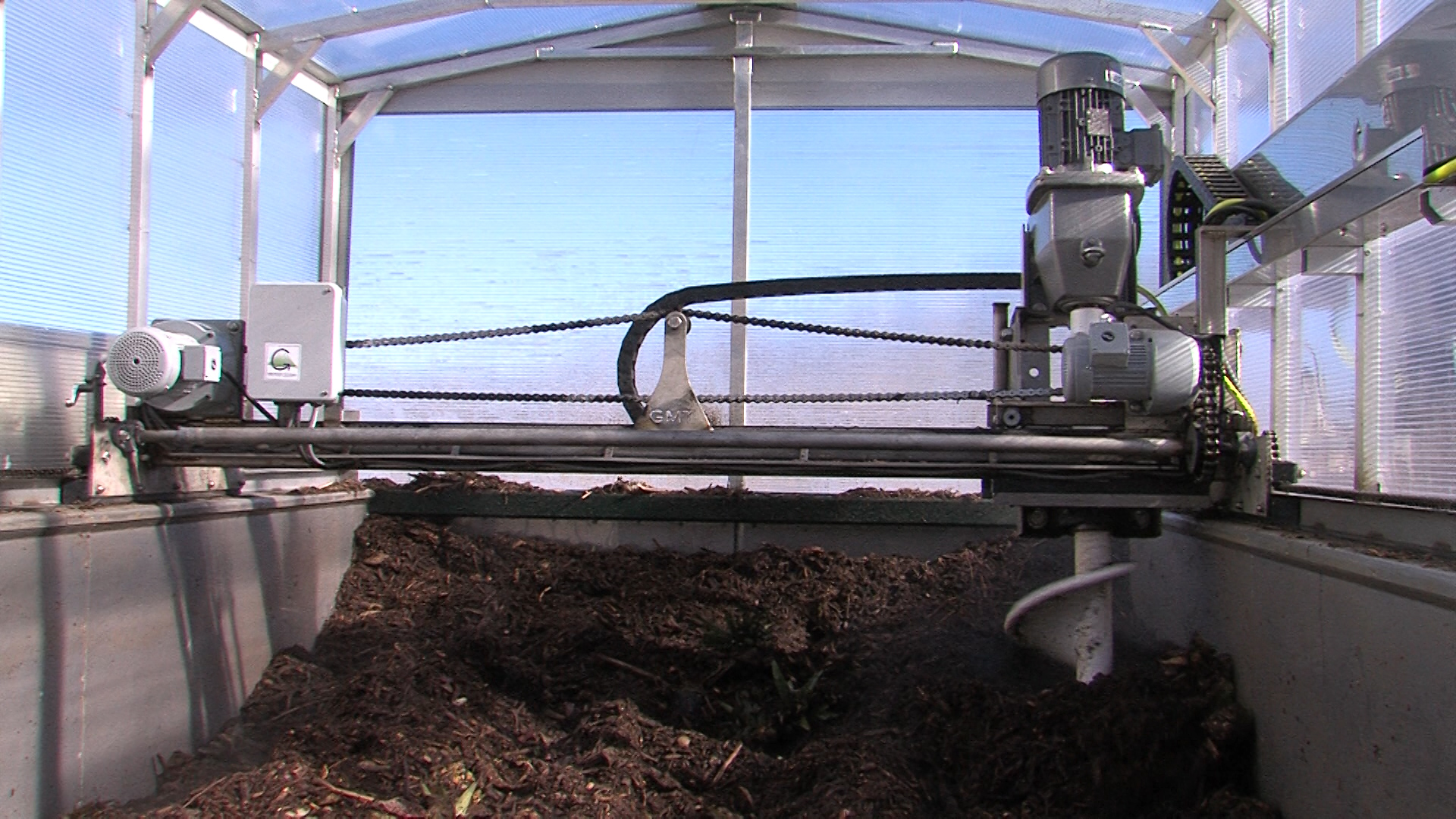Composter reduces food waste
Since January, a machine which converts food waste to compost, a nutrient-rich soil supplement for plants, has been running outside the Stan Laub Training Center.
Alexi Lamm, USU sustainability coordinator, said she is excited the composter is finally at the university.
“Since I started working here about two years ago, this has been a discussion, so it finally happened,” Lamm said. “I’m glad to see that USU is able to close the loop on our food waste and put it back on campus for people to come see it.”
Inside the machine, an auger aerates and mixes a combination of wood chips and food waste, which comes from dining services.
Lamm said the composter’s job is to facilitate the growth of microbes, which will give nutrients to the additive. She said the wood chips give the microbes carbon and the food waste contains both that and nitrogen. She said USU Sustainability wants the ratio to be one carbon to between 20 and 40 nitrogen.
“By having the correct ratio we have energy for the microbes, which will be the carbon,” Lamm said. “The micronutrients and things in the nitrogen are sort of the building blocks for cell development.”
Lamm said only pre-consumer food waste is put in the composter, which includes the parts cut out of fruit or vegetables — such as the top of a pineapple — before serving it. She said when USU Sustainability figures out how to get the most out of composting with pre-consumer waste, the department will experiment with other foods.
Alan Andersen, executive director of Dining Services, said the composter will save money for facilities, which previously had to buy compost to use for landscaping.
“In the long run, facilities will actually save money, thus the university will save money,” Andersen said. “Every penny not spent on facilities to do all that can be saved and hopefully reduce tuition. Who knows what it saves?”
Liz Winters, a sophomore majoring in conservation and restoration ecology who applied for the Blue Goes Green grant, which funded the machine, said the composter will help the university become more carbon neutral.
“It’s a really important step to take for the university to close a gap or a loop on our waste production on campus,” Winters said.
Lamm said the Blue Goes Green grant became the catalyst for the composter to be built.
“There had been a lot of people talking about it. There was some money available, and I think that extra infusion of student energy and also some money allowed this project to launch,” Lamm said.
Lamm wrote in an e-mail that the grant contributed $12,000 to the project. According to a budget template she provided, the requested funds were more than $59,000.
“It was pretty expensive, but we had matching funds from facilities and Dining Services,” Winters said. “They both pledged some funds.”
Facilities contributed $27,700 and dining services contributed $5,000.
Andersen said he likes that this project has brought people from different departments together, including USU Facilities and Dining Services.
“Too often you see departments on campus get departmentalized, and they’re kind of more interested in what’s good for just them,” Andersen said. “It’s been great to see a lot of different departments come together and really do something proactive.”
— topherwriter@gmail.com

